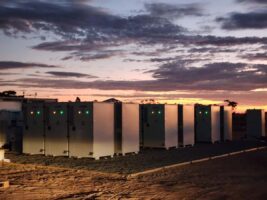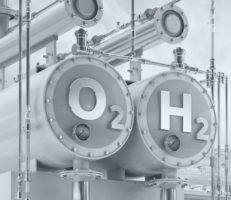Long planned and anticipated, the first production-version hydrogen fuel cell electric vehicles (FCEV) are rolling out and more are on their way. Mass-market models from Honda, Hyundai and Toyota are in the works. They are an important solution — along with plug-in electric vehicles — for reducing our carbon emissions and achieving our goals of putting more zero-emission vehicles on the road. As I have written before, FCEVs have advantages of greater driving range and faster refueling. Questions arise, however, about just how clean these vehicles are if the early models rely on hydrogen produced from natural gas — a fossil fuel.
Like plug-in cars, FCEVs use clean electric motors and produce no harmful tailpipe emissions. Their total emissions, however, depend on how the hydrogen fuel is made and delivered. As demonstrated in a new Union of Concerned Scientists fact sheet, full lifecycle “well-to-wheels” global warming emissions analyses show that even when using hydrogen from natural gas, today’s early hydrogen-powered FCEVs reduce emissions by over 30 percent compared with conventional gasoline vehicles. And in California, with requirements for renewable hydrogen, FCEVs are cutting emissions even more.
 Hydrogen fuel can be made from different sources
Hydrogen fuel can be made from different sources
Currently, most hydrogen is made by converting natural gas into hydrogen gas and carbon dioxide. However, hydrogen can also be produced from lower-carbon sources of energy such as electricity from solar or wind, which can be used to split water into hydrogen and oxygen through electrolysis. Another low-carbon source of hydrogen is methane gas from landfills and sewage treatment facilities, provided that methane leakage is minimized.
While natural gas is likely to be a significant source of hydrogen fuel in the short term, the first vehicles will also use hydrogen from renewable sources. The initial rollout of FCEVs is happening in California due to the state’s investment in hydrogen refueling stations. California law (SB 1505) requires that at least 33 percent of hydrogen produced at these state-supported stations be generated from low-carbon sources, and the state projects that at least 46 percent of hydrogen will come from renewable sources by the end of 2015. This renewable-hydrogen standard will apply to all stations in the state once production of hydrogen reaches 3,500 metric tons per year (enough for about 15,000 cars).
How does the first production fuel cell vehicle stack up?
The first commercially available hydrogen-powered FCEV, the Hyundai Tucson Fuel Cell SUV, produces substantially lower global warming emissions than the Tucson’s gasoline version. This FCEV produces 286 g CO2eq/mile if fueled by hydrogen produced from natural gas, equal to the emissions from a 38-mpg gasoline vehicle. When using hydrogen that meets California’s 33 percent renewable hydrogen standard, the fuel cell SUV emits 202 g CO2eq/mile—the equivalent of a 54-mpg gasoline vehicle, or less than half the global warming emissions of the SUV’s gasoline version. By the end of 2015, California is projected to produce 46 percent of its hydrogen fuel from renewable sources, which would render the Tucson FCEV’s emissions equal to that of a 63-mpg gasoline car.
Future improvements for fuel cell vehicles
Fuel cell vehicles that come to market over the next few years will likely cut emissions relative to gasoline vehicles even more due to advances in fuel cell performance and in automotive technologies such as the electric-drive train, as well as the wider availability of lower-carbon hydrogen. Such evolution has already been the norm among plug-in electric vehicles, including the Nissan Leaf; in just three years on the market, the Leaf lowered its electricity consumption by more than 10 percent, from 0.34 to 0.30 kWh/mile. And because fuel cell vehicles share many components with plug-in electric vehicles, advances such as improved electric motors or more efficient power systems will benefit fuel cell vehicles too. Policies such as those in California, which mandates increases in lower-carbon hydrogen production, will further improve the benefits of switching from gasoline to fuel cell vehicles.
Source: UCSUSA. Reproduced with permission.











